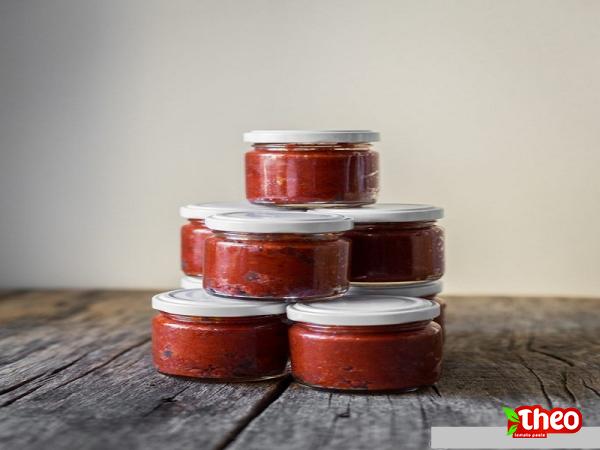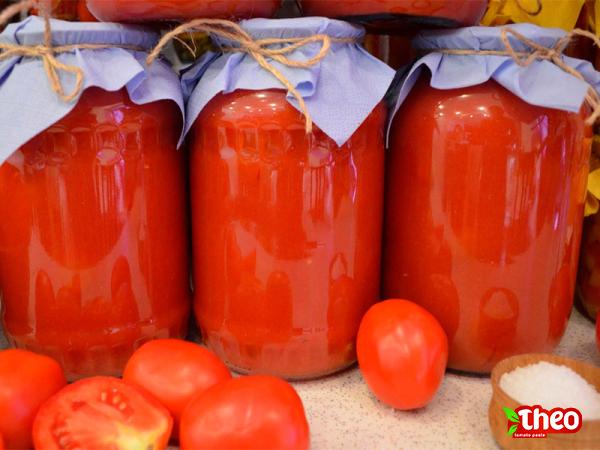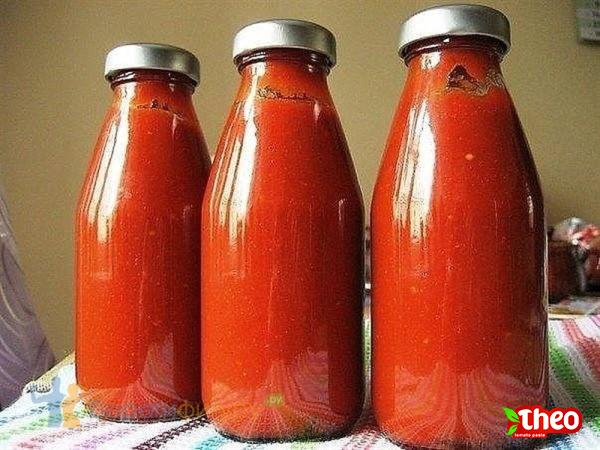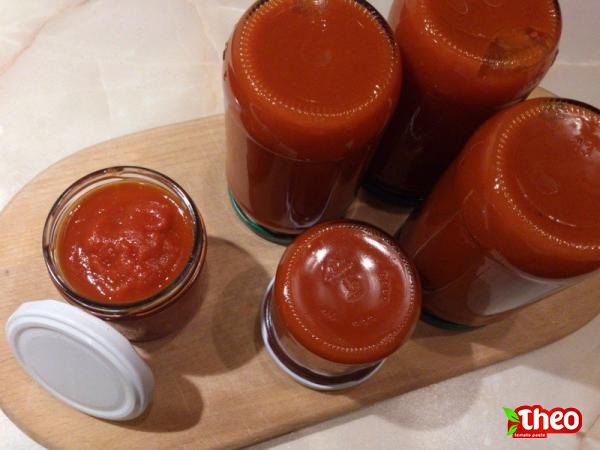The Versatile and Flavorful World of Jar Tomato Paste Tomato paste is a product that has become a staple in kitchens around the world, thanks to its versatility, rich flavor, and long shelf life. In recent years, jar tomato paste has gained popularity as a convenient and economical option for consumers. This article explores the production process, nutritional value, uses, and purchasing considerations of tomato paste in jars. To understand jar tomato paste, it’s important to start with the basics: tomatoes. Tomatoes are harvested at peak ripeness and processed into paste using a combination of boiling, straining, and reducing the tomatoes until a concentrated product is achieved. This process helps preserve the flavor while increasing its shelf life. In addition, some manufacturers add salt to enhance flavor and act as a natural preservative. Nutritionally, tomato paste is rich in vitamins A and C, as well as lycopene, a powerful antioxidant known for its potential health benefits. The concentration of nutrients is one of the reasons tomato paste is considered a healthy addition to various recipes. Furthermore, it is a low-calorie food, making it suitable for those watching their calorie intake. The uses of jar tomato paste are vast, making it a versatile ingredient in many cuisines. Its concentrated flavor makes it an excellent base for sauces, soups, stews, and even marinades. It is often used as a flavor enhancer in various dishes, adding depth and complexity. Beyond its culinary applications, tomato paste has also found its way into the beauty industry, where it is used in DIY face masks due to its potential skin benefits.

tomato paste
 When it comes to purchasing jar tomato paste, there are a few factors to consider. Firstly, the quality of the tomatoes used in the production process greatly affects the final product. Opting for paste made from high-quality tomatoes will ensure better taste and richer flavor. Additionally, paying attention to the ingredient list is crucial, as some brands may include additives or preservatives, which may affect the taste and nutritional value. Lastly, packaging plays a role as well, with tight-sealing jars being preferred to maintain freshness. In recent years, jar tomato paste has gained popularity due to its convenience. By eliminating the need for opening a whole can just to use a portion, jar tomato paste provides ease of use and reduces waste. The resealable jar allows for preserving the paste for longer periods without compromising its quality. This added convenience has made jar tomato paste a go-to ingredient for both professional chefs and home cooks alike. As with any food product, proper storage and handling are crucial to maintaining the quality of jar tomato paste. Once opened, it is important to store the jar in a cool, dark place, preferably in the refrigerator, to prevent spoilage. It is advisable to use the paste within a week after opening to ensure the best taste and quality. In conclusion, jar tomato paste is a versatile and flavorful ingredient that has become a kitchen staple for many. Its production process, nutritional value, uses, and purchasing considerations make it an attractive option for consumers. Whether used as a base for sauces or adding depth to various dishes, jar tomato paste is a convenient and economical choice that adds a burst of flavor to every culinary creation.The Business of Jar Tomato Paste: Market Analysis and Consumer Trends
When it comes to purchasing jar tomato paste, there are a few factors to consider. Firstly, the quality of the tomatoes used in the production process greatly affects the final product. Opting for paste made from high-quality tomatoes will ensure better taste and richer flavor. Additionally, paying attention to the ingredient list is crucial, as some brands may include additives or preservatives, which may affect the taste and nutritional value. Lastly, packaging plays a role as well, with tight-sealing jars being preferred to maintain freshness. In recent years, jar tomato paste has gained popularity due to its convenience. By eliminating the need for opening a whole can just to use a portion, jar tomato paste provides ease of use and reduces waste. The resealable jar allows for preserving the paste for longer periods without compromising its quality. This added convenience has made jar tomato paste a go-to ingredient for both professional chefs and home cooks alike. As with any food product, proper storage and handling are crucial to maintaining the quality of jar tomato paste. Once opened, it is important to store the jar in a cool, dark place, preferably in the refrigerator, to prevent spoilage. It is advisable to use the paste within a week after opening to ensure the best taste and quality. In conclusion, jar tomato paste is a versatile and flavorful ingredient that has become a kitchen staple for many. Its production process, nutritional value, uses, and purchasing considerations make it an attractive option for consumers. Whether used as a base for sauces or adding depth to various dishes, jar tomato paste is a convenient and economical choice that adds a burst of flavor to every culinary creation.The Business of Jar Tomato Paste: Market Analysis and Consumer Trends
Specifications of tomato paste
 Introduction: The jar tomato paste industry has experienced significant growth in recent years, driven by shifting consumer preferences, increased demand for convenience, and the versatility of the product. This section will delve into the market analysis and consumer trends that have shaped the business of jar tomato paste. Market Analysis: The market for jar tomato paste is characterized by a high level of competition, with numerous brands vying for consumer attention. The global tomato paste market is expected to reach a value of USD 5.1 billion by 2026, growing at a compound annual growth rate (CAGR) of 3.8% from 2020 to 2026. Regional Analysis: The demand for jar tomato paste is strongest in North America, Europe, and Asia Pacific. North America holds a significant market share due to the growing popularity of Italian cuisine and the use of tomato paste in various traditional dishes. Europe follows closely, with countries like Italy and Spain being major consumers and producers of tomato paste. Asia Pacific is also witnessing growth, fueled by the increasing adoption of western cuisines and the demand for convenience food products. Consumer Trends: 1. Health and Wellness: In recent years, there has been a growing emphasis on health and wellness among consumers. As a result, there is a rising demand for natural and organic tomato paste made from high-quality tomatoes without additives or preservatives. 2. Sustainability: Consumers are increasingly conscious of the environmental impact of their purchasing decisions. This has led to a greater preference for jar tomato paste that is sustainably sourced, with eco-friendly packaging options. 3. Convenience: Busy lifestyles and the need for quick and easy meal solutions have contributed to the popularity of jar tomato paste. The convenience of resealable jars and the ability to use only the required amount without wastage have made it an attractive option for consumers. 4. Flavorful Ethnic Cuisines: The globalization of food culture has led to the increased consumption of international cuisines, such as Italian and Mexican. Jar tomato paste serves as a key ingredient in these flavor-packed dishes and plays a vital role in replicating authentic flavors at home.
Introduction: The jar tomato paste industry has experienced significant growth in recent years, driven by shifting consumer preferences, increased demand for convenience, and the versatility of the product. This section will delve into the market analysis and consumer trends that have shaped the business of jar tomato paste. Market Analysis: The market for jar tomato paste is characterized by a high level of competition, with numerous brands vying for consumer attention. The global tomato paste market is expected to reach a value of USD 5.1 billion by 2026, growing at a compound annual growth rate (CAGR) of 3.8% from 2020 to 2026. Regional Analysis: The demand for jar tomato paste is strongest in North America, Europe, and Asia Pacific. North America holds a significant market share due to the growing popularity of Italian cuisine and the use of tomato paste in various traditional dishes. Europe follows closely, with countries like Italy and Spain being major consumers and producers of tomato paste. Asia Pacific is also witnessing growth, fueled by the increasing adoption of western cuisines and the demand for convenience food products. Consumer Trends: 1. Health and Wellness: In recent years, there has been a growing emphasis on health and wellness among consumers. As a result, there is a rising demand for natural and organic tomato paste made from high-quality tomatoes without additives or preservatives. 2. Sustainability: Consumers are increasingly conscious of the environmental impact of their purchasing decisions. This has led to a greater preference for jar tomato paste that is sustainably sourced, with eco-friendly packaging options. 3. Convenience: Busy lifestyles and the need for quick and easy meal solutions have contributed to the popularity of jar tomato paste. The convenience of resealable jars and the ability to use only the required amount without wastage have made it an attractive option for consumers. 4. Flavorful Ethnic Cuisines: The globalization of food culture has led to the increased consumption of international cuisines, such as Italian and Mexican. Jar tomato paste serves as a key ingredient in these flavor-packed dishes and plays a vital role in replicating authentic flavors at home.
buy tomato paste
 5. Rising Popularity of Plant-Based Diets: The growing trend of plant-based diets has also boosted the demand for jar tomato paste. With its natural and concentrated flavor, tomato paste serves as an excellent substitute for meat-based sauces and gravies, catering to the needs of vegetarian and vegan consumers. Marketing Strategies: To remain competitive in the jar tomato paste market, brands must adopt effective marketing strategies. Some key approaches include: 1. Brand Differentiation: Brands can differentiate themselves by highlighting unique features such as the use of premium tomatoes, organic sourcing, or innovative packaging to attract health-conscious and environmentally-aware consumers. 2. Online Presence: Establishing a strong online presence through websites, social media platforms, and e-commerce channels is crucial for reaching a wider consumer base and promoting brand visibility. 3. Collaboration with Chefs and Recipe Development: Collaborating with renowned chefs and promoting recipe development using jar tomato paste as a star ingredient can strengthen brand credibility and create awareness among consumers. 4. Sustainability Initiatives: Brands can focus on sustainability initiatives such as using eco-friendly packaging, supporting local farmers, and implementing efficient waste management systems to appeal to environmentally-conscious consumers. 5. Product Innovation: Continuous product innovation, such as introducing flavored tomato pastes, low-sodium options, or value-added variants like ready-to-use sauces, can help brands stand out in the competitive landscape and cater to evolving consumer needs. Conclusion: The business of jar tomato paste is vibrant and evolving, driven by market trends and consumer preferences. With the right marketing strategies, brands can tap into the growing demand for this versatile ingredient and capitalize on the opportunities presented by the health-conscious, convenience-seeking, and globally-inspired consumer base. By focusing on quality, sustainability, and innovation, brands can carve out a niche in the market and establish a loyal customer base in the competitive world of jar tomato paste.
5. Rising Popularity of Plant-Based Diets: The growing trend of plant-based diets has also boosted the demand for jar tomato paste. With its natural and concentrated flavor, tomato paste serves as an excellent substitute for meat-based sauces and gravies, catering to the needs of vegetarian and vegan consumers. Marketing Strategies: To remain competitive in the jar tomato paste market, brands must adopt effective marketing strategies. Some key approaches include: 1. Brand Differentiation: Brands can differentiate themselves by highlighting unique features such as the use of premium tomatoes, organic sourcing, or innovative packaging to attract health-conscious and environmentally-aware consumers. 2. Online Presence: Establishing a strong online presence through websites, social media platforms, and e-commerce channels is crucial for reaching a wider consumer base and promoting brand visibility. 3. Collaboration with Chefs and Recipe Development: Collaborating with renowned chefs and promoting recipe development using jar tomato paste as a star ingredient can strengthen brand credibility and create awareness among consumers. 4. Sustainability Initiatives: Brands can focus on sustainability initiatives such as using eco-friendly packaging, supporting local farmers, and implementing efficient waste management systems to appeal to environmentally-conscious consumers. 5. Product Innovation: Continuous product innovation, such as introducing flavored tomato pastes, low-sodium options, or value-added variants like ready-to-use sauces, can help brands stand out in the competitive landscape and cater to evolving consumer needs. Conclusion: The business of jar tomato paste is vibrant and evolving, driven by market trends and consumer preferences. With the right marketing strategies, brands can tap into the growing demand for this versatile ingredient and capitalize on the opportunities presented by the health-conscious, convenience-seeking, and globally-inspired consumer base. By focusing on quality, sustainability, and innovation, brands can carve out a niche in the market and establish a loyal customer base in the competitive world of jar tomato paste.




